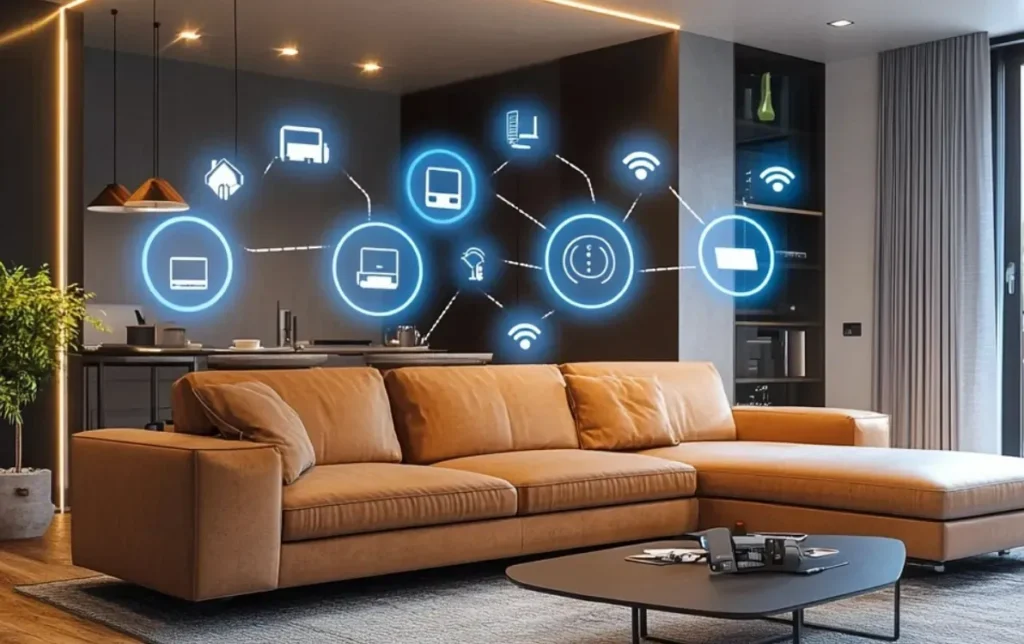
How to Test Smart Home Devices for Optimal Performance
In today’s rapidly evolving world of technology, smart home devices have become an integral part of our daily lives. From smart thermostats to intelligent lighting systems, these devices offer convenience, security, and energy efficiency. However, to ensure they function at their best, it’s crucial to test them thoroughly. This guide will walk you through how to test smart home devices, ensuring they operate optimally and deliver the benefits promised.

Understanding the Importance of Testing
Before diving into the specifics of testing, it’s essential to understand why testing is necessary. Testing not only ensures that the device is functioning correctly but also helps in identifying potential issues that could arise in the future. Regular testing can prevent malfunctions and ensure a seamless smart home experience.
Types of Smart Home Devices
Smart home devices come in various forms, each serving a specific purpose. Some popular categories include:
- Smart Lighting Systems: These offer energy-efficient lighting solutions with customizable settings.
- Smart Thermostats: They help in maintaining optimal temperature settings while saving energy.
- Smart Security Cameras: Essential for home security, providing real-time surveillance.
- Smart Speakers: Act as a central hub for voice commands and controlling other smart devices.
Preparation for Testing
Before you begin testing, it’s crucial to prepare adequately. This involves gathering the necessary tools and ensuring all devices are connected to a stable internet connection.
Tools Required
Some essential tools you may need include:
- A reliable Wi-Fi connection
- A smartphone or tablet with the relevant apps installed
- User manuals for each device
Initial Setup
Ensure each device is set up correctly according to the manufacturer’s instructions. This includes connecting them to your home network and pairing them with any necessary apps.
Testing Connectivity
One of the first aspects to test is the connectivity of the smart home devices. A stable connection ensures that the devices can communicate effectively with each other and with you.
Wi-Fi Connectivity
Ensure all devices are connected to the Wi-Fi network. If any device struggles to maintain a connection, consider relocating it closer to the router or using a Wi-Fi extender.
Integration with Hubs
For devices that require a central hub, test their integration to ensure seamless operation. For instance, smart appliances integration can significantly enhance performance.
Functional Testing
Functional testing involves checking whether each device performs its intended tasks effectively. This is crucial to ensure the device meets your expectations.
Testing Smart Lighting
Check if the smart lighting system responds correctly to commands, both through voice and app controls. Verify that the lights adjust brightness and color as specified.
Evaluating Smart Thermostats
Test the thermostat’s ability to maintain the desired temperature. Ensure it accurately reflects changes made via the app or manually.
Security and Privacy Checks
With the increasing number of connected devices, security is paramount. Ensure your smart home devices have the necessary security measures in place.
Firmware Updates
Regularly check for firmware updates for all devices. Updates often include security patches that protect against vulnerabilities.
Privacy Settings
Review the privacy settings on each device. Ensure they align with your preferences, especially for devices like voice command systems.
Performance Evaluation
After conducting functional and security tests, evaluate the overall performance of the devices. This helps in identifying areas for improvement.
Energy Efficiency
Assess the energy consumption of each device. Many smart devices offer insights into their energy usage, helping you make informed decisions.
Response Time
Check how quickly each device responds to commands. Delays can indicate connectivity or processing issues.
Troubleshooting Common Issues
Despite thorough testing, issues may still arise. Being prepared to troubleshoot can save time and frustration.
Connectivity Issues
If a device frequently disconnects, consider resetting it or checking your network settings. Persistent issues may require contacting customer support.
Device Malfunctions
For devices that malfunction, refer to the user manual for troubleshooting tips. If the issue persists, a replacement may be necessary.
Future of Smart Home Testing
As technology advances, so will the methods for testing smart home devices. Staying informed about new developments can help you maintain an efficient smart home.
Automated Testing
Future devices may offer automated testing features, simplifying the process for users. Keeping an eye on these advancements can be beneficial.
Integration with AI
Artificial Intelligence could play a significant role in future smart home testing, providing intelligent insights and recommendations.
Conclusion
Testing your smart home devices is crucial for ensuring a seamless and efficient home environment. By following these steps, you can ensure that your devices function optimally, providing the convenience and security you desire. For more insights on smart home solutions, you can visit the Security.org.

FAQ
How often should I test my smart home devices?
It’s recommended to test your devices every few months or whenever you notice a change in performance.
What should I do if a device isn’t working properly?
First, try resetting the device. If the issue persists, consult the user manual or contact customer support.
Are there any risks associated with smart home devices?
While smart devices offer many benefits, they can pose security risks if not properly secured. Regular updates and strong passwords can mitigate these risks.
This article contains affiliate links. We may earn a commission at no extra cost to you.